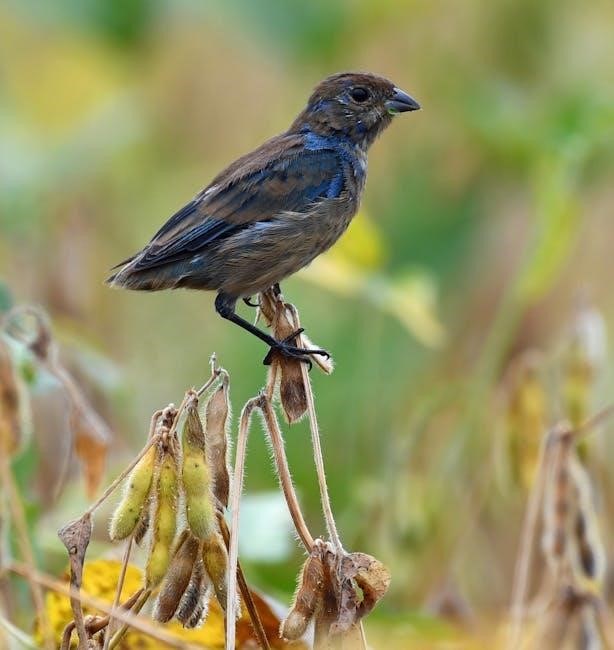Birding in Alabama offers a rich experience with over 400 species documented. The state’s diverse habitats attract both migratory and resident birds, making it a paradise for enthusiasts.
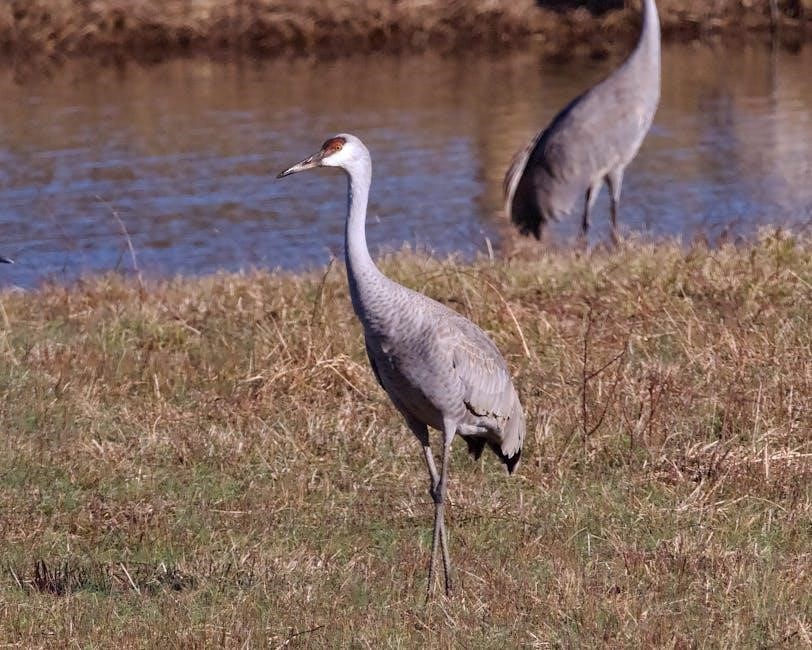
Diversity of Bird Species in Alabama
Alabama is home to an impressive array of bird species, with over 400 documented types. The state’s location along the Gulf of Mexico makes it a critical stopover for migratory birds, while its diverse habitats, from wetlands to forests, support a wide variety of resident species. Waterfowl, such as ducks and geese, thrive in coastal areas, while songbirds like warblers and tanagers are abundant during spring and fall migrations. Raptors, including hawks and eagles, can be spotted soaring overhead. Shorebirds, like sandpipers and plovers, frequent the beaches and mudflats, and birds of prey, such as ospreys, are common near waterways. This rich diversity makes Alabama a paradise for birders, offering opportunities to observe species that are rare or absent in other regions.
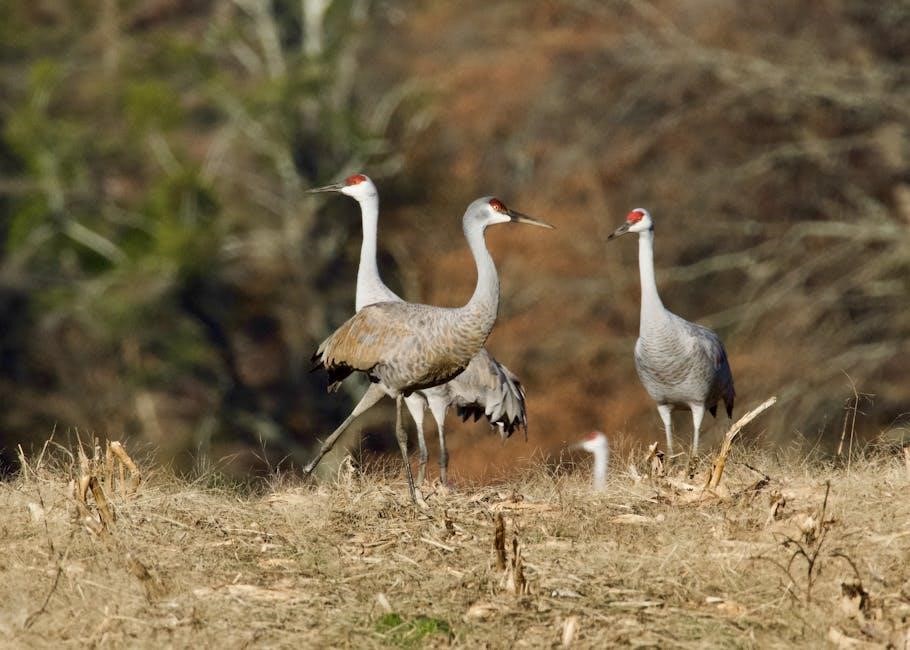
Bird Migration in Alabama
Alabama is a critical stopover for migratory birds, particularly along the Gulf Coast. Species like warblers and tanagers flock to the state during spring and fall migrations, seeking refuge and abundant food sources. The state’s strategic location along the Central Flyway and the Mississippi Flyway makes it a vital resting ground for thousands of birds traveling between their breeding and wintering habitats. Migrants arrive as early as February and depart as late as November, with peak activity in April and September. Coastal areas, such as Dauphin Island, are renowned for their concentrations of migratory birds, offering unparalleled opportunities for observation and study.
Migration Patterns and Key Routes
Alabama plays a vital role in bird migration, serving as a key stopover along the Central and Mississippi Flyways. These routes guide millions of birds through the state annually. During spring, species like warblers, tanagers, and orioles flock to Alabama’s coastal regions, particularly Dauphin Island, to rest and refuel. In fall, the same areas welcome migrants heading south, including shorebirds and raptors. The Gulf Coast’s beaches, marshes, and forests provide critical habitats for these travelers. Migrants often concentrate in areas like Mobile Bay and the Tennessee Valley, where food sources are abundant. Alabama’s geographic position makes it a bottleneck for migration, offering birders exceptional opportunities to observe a wide variety of species during peak seasons.
How Birds Navigate During Migration
Birds employ remarkable navigation strategies during migration, relying on celestial cues, magnetic fields, and visual landmarks. They use the sun, stars, and Earth’s magnetic field to determine direction. Some species also recognize topographic features like rivers and coastlines. Alabama’s location along major flyways means birds passing through utilize these navigational aids extensively. Additionally, birds may follow established migration routes passed down through generations, ensuring they reach critical stopover points like Dauphin Island. This innate and learned navigation system allows birds to traverse vast distances accurately, making Alabama a key observation site for studying these incredible journeys.
Hazards and Challenges Faced by Migrating Birds
Migrating birds face numerous challenges, including harsh weather conditions, predators, and habitat loss. Alabama’s location along major flyways exposes birds to storms and unpredictable climate changes. Habitat destruction due to urbanization reduces critical stopover points, while pollution and pesticides threaten their health. Collisions with buildings, wind turbines, and power lines are significant threats, especially during nocturnal flights. Additionally, climate change disrupts migratory timing, leading to mismatches with food availability. Despite these dangers, conservation efforts in Alabama aim to protect habitats and reduce mortality rates, ensuring safer migration corridors for these remarkable creatures.
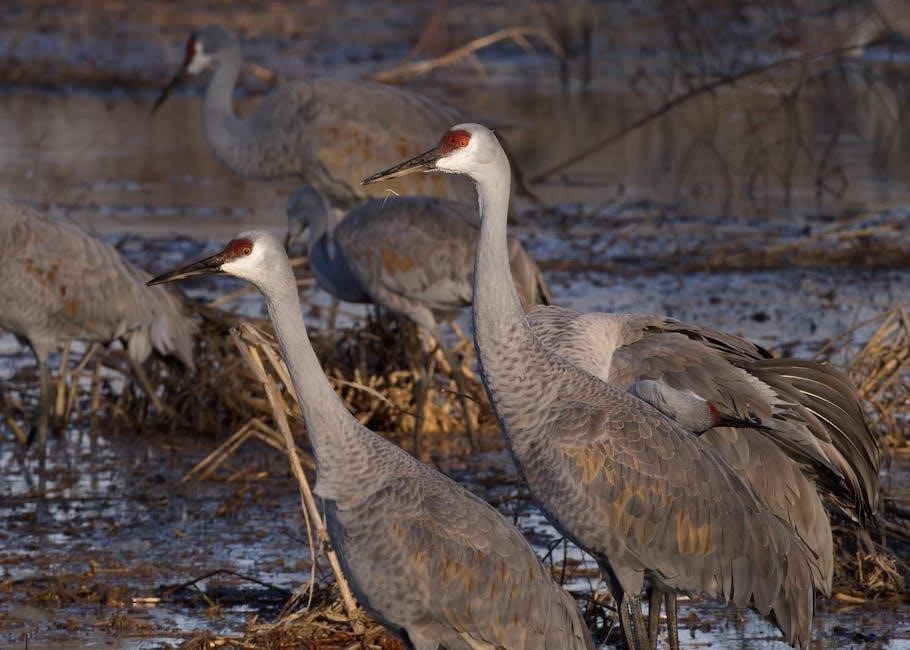
Bird Identification Tips
Identify Alabama birds by plumage, size, shape, and behavior. Field guides, like Stan Tekiela’s, simplify recognition with color-coded sections and detailed descriptions for accurate identification.
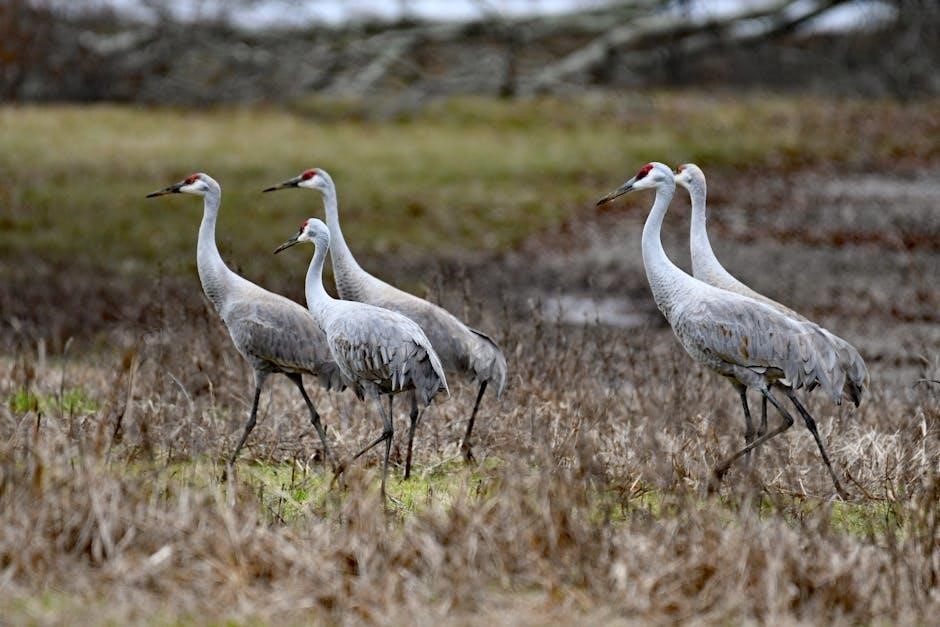
Visual Identification: Plumage, Size, and Color
Visual identification is key to recognizing Alabama’s birds. Plumage patterns, colors, and size are critical factors. For instance, the Carolina chickadee is small, gray above, and white below, while the Eastern Bluebird is known for its vibrant blue and orange hues. Size comparisons, such as distinguishing the larger Northern Cardinal from the smaller American Goldfinch, aid in accurate identification. Field guides organized by color simplify the process, allowing quick reference for species like the yellow warbler or the red-winged blackbird. Paying attention to seasonal changes in plumage, such as the transformation of the American Robin’s breast color, further refines identification skills. These visual cues, combined with habitat observations, make birding in Alabama both rewarding and precise.

Behavioral Traits for Accurate Identification
Behavioral traits are essential for accurately identifying birds in Alabama. Observing how birds forage, fly, and interact with their environment provides valuable clues. For example, Barn Swallows are often seen flying low over fields, catching insects mid-air, while Eastern Bluebirds perch on branches, scanning the ground for small invertebrates. The American Robin’s ground-foraging behavior, where it tugs earthworms from the soil, is a distinctive trait. Similarly, the Red-winged Blackbird’s tendency to gather in large groups in wetlands is a key identifier. These behaviors, combined with habitat preferences, help birders distinguish species more effectively. By noting unique actions like the Carolina Chickadee’s acrobatic tree movements or the Northern Cardinal’s frequent visits to backyard feeders, enthusiasts can enhance their identification skills and enrich their birding experiences in Alabama.
Key Birding Locations in Alabama
Alabama’s diverse landscapes host exceptional birding spots. Dauphin Island, a spring migration hotspot, and the Black Belt region, known for its rich birdlife, are must-visit destinations for enthusiasts.
Dauphin Island: A Migration Hotspot
Dauphin Island, located off Alabama’s Gulf Coast, is renowned as one of North America’s top spring migration hotspots. Its strategic position along the Central Flyway makes it a critical stopover for thousands of migratory birds. During peak seasons, birders can spot rare species like the Limpkin and Clapper Rail, as well as numerous warblers, tanagers, and orioles. The island’s diverse habitats, including beaches, marshes, and forests, provide ideal resting and feeding grounds for birds. Local birding guides and conservation efforts enhance the experience, making it a must-visit destination for enthusiasts. The island’s reputation as a birding paradise attracts experts and novices alike, offering unparalleled opportunities to witness the beauty of migration firsthand.
Birding in the Black Belt Region
The Black Belt Region of Alabama, known for its rich history and fertile soil, is also a haven for birding enthusiasts. This area, characterized by its open landscapes and diverse habitats, supports a wide variety of bird species. Waterfowl, such as ducks and geese, thrive in its wetlands, while grasslands attract species like meadowlarks and sparrows. The region’s rural setting and minimal urban development create an ideal environment for bird watching. Local initiatives are emerging to promote bird hunting and ecotourism, aiming to boost economic growth while preserving natural habitats. With its unique blend of history and wildlife, the Black Belt Region offers a distinctive birding experience that highlights Alabama’s ecological diversity and cultural heritage.
Conservation Efforts in Alabama
Alabama’s conservation initiatives focus on habitat preservation and combating climate change. Local and national partnerships work to protect bird populations and their ecosystems, ensuring a sustainable future for wildlife.
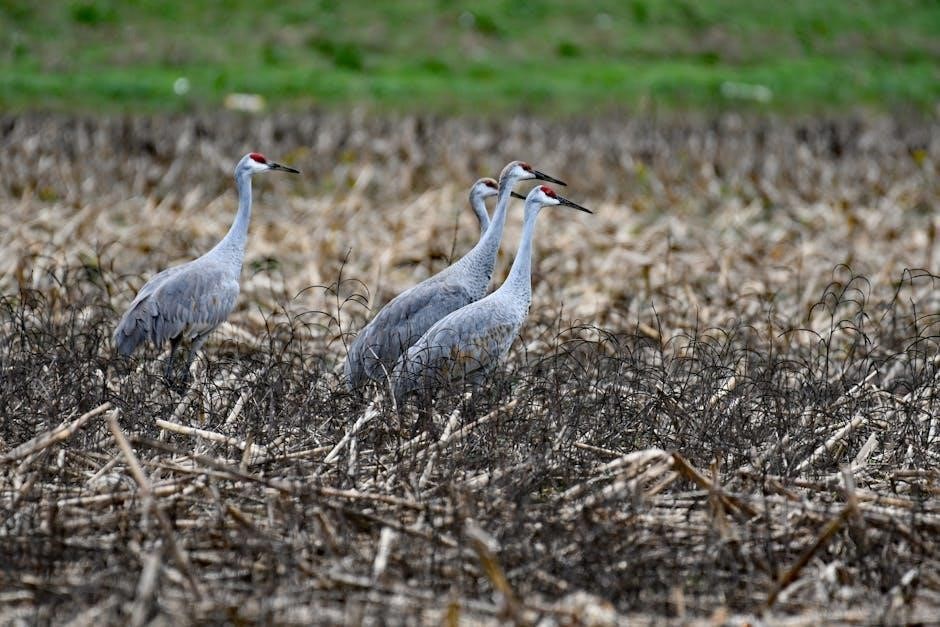
Threats to Bird Populations and Habitats
Bird populations in Alabama face significant threats, primarily from habitat loss due to urbanization and agricultural expansion. Climate change exacerbates these challenges, altering ecosystems and disrupting migratory patterns. Pollution, particularly from pesticides and industrial waste, further endangers bird habitats. Additionally, invasive species compete with native birds for resources, compounding the stress on already vulnerable populations. These factors collectively threaten the biodiversity and stability of Alabama’s avian ecosystems, necessitating urgent conservation efforts to mitigate these impacts and safeguard bird habitats for future generations.
Local and National Initiatives for Bird Conservation
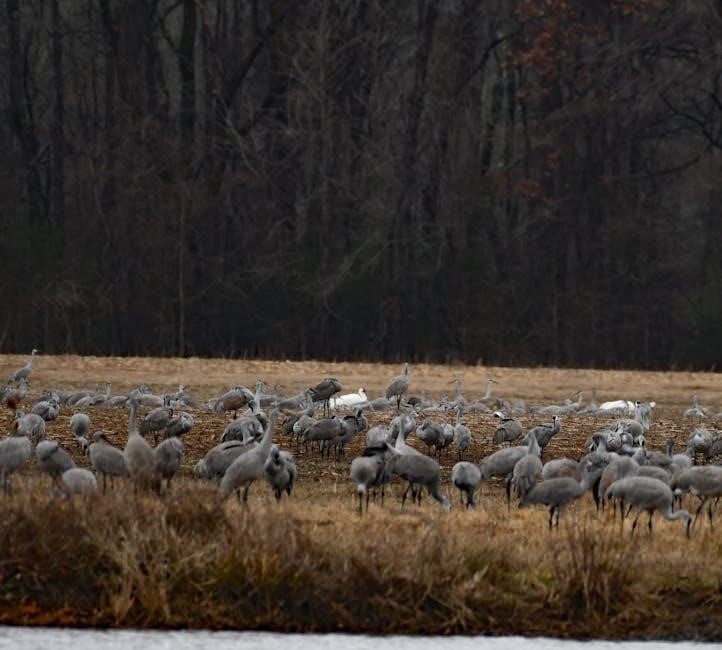
Alabama benefits from both local and national conservation efforts aimed at protecting its avian populations. Locally, organizations like the Alabama Ornithological Society and regional birding groups work tirelessly to advocate for habitat preservation and educate the public. National initiatives, such as those led by the Audubon Society and the U.S. Fish and Wildlife Service, provide critical support for migratory bird protection and wetland restoration. Programs like the North American Bird Conservation Initiative also play a vital role in addressing threats and promoting sustainable practices. These collaborative efforts ensure that Alabama’s bird populations and habitats receive the protection they need to thrive for generations to come.
